ZAHA HADID
Italy’s magnificent national museum of 21st-century visual art is a future-oriented exhibition space that promotes cultural innovation. In responding to the challenges of MAXXI, architect Zaha Hadid has created a building as radical and innovative as the institution itself.
Faced with an awkward L-shaped plot, the architect came up with the concept of a collection of meandering lines that travel up and down while also crossing from one end of the site to the other. These lines became walls, which enclose not simply a single building, but a series of related “suites, treated almost as separate buildings. They contain galleries and other spaces, enabling curators to stage several independent exhibitions at once. Other lines became stairs, walkways, and bridges flowing through and linking the suites. Seen from the outside, this revolutionary structure curves, dips, and rises to create a group of undulating forms and soft
ZAHA HADID b. 1950 outlines that invite exploration. Large windows offer passersby glimpses of the interior, while exterior views set the building in context. Inside, there is a similar sense of gently curving spaces, counterpointed by the system of access ways and bridges, some hugging the sides of the interior spaces, others jumping across voids to create new and energetic lines.
MAXXI achieves its dynamic effect with a very restricted palette of colors. The exterior of the structure is predominantly white, allowing a play of shadows between the curving walls. At night, when the building is lit, partly from ground level, the contrast of dark and light is also emphasized. Inside, a similar effect is achieved through the combination of the pale walls and black lines of stairs and walkways. The result is a spectacular building that is restrained without being neutral, one that is inviting and fascinates the eye without overwhelming the art on display.
Iraqi-British architect Zaha Hadid received a degree in mathematics in Beirut before studying architecture in London. She worked with Rem Koolhaas (who had been one of her teachers at London’s Architectural Association) at the Office for Metropolitan Architecture before starting her own practice in London in 1980. Her buildings are widely admired and have won many awards. They often have dramatic exteriors (frequently featuring unusual and arresting geometry) and display innovative use of both interior and exterior space. Hadid’s career began slowly, partly because the unique shapes she invented seemed difficult or impossible to build. Small-scale projects, however, led to much larger commissions from the Rosenthal Center for Contemporary Art in Cincinnati to the Guangzhou Opera House. In 2004 she became the first woman to win the prestigious Pritzker Prize, architecture’s highest honor.
Visual tour
3 ENTRANCE From this point it is clear that the building is made up of different elements that sweep above and past one another. As well as forming interior suites of galleries, these elements also define exterior spaces. This area near the doorway provides shelter and shade to visitors entering and leaving and also allows sculptures to be displayed outside.
4 SUITE V WINDOW
This suite sails over the rest of the building and ends in a striking projecting section with a huge floor-to-ceiling window. The drama of this overhang is enhanced because of the unusual geometry, which lends a sense of instability to the otherwise solid-looking structure. This eye-catching feature offers extensive views outside.
2 ROUTES INSIDE
The pathways through the building create a feeling of adventure, and there is a sense of flowing space rather than the succession of individual rooms that make up most art galleries. In places where there is no art on the walls, the spaces themselves seem like enormous sculptures.
3 SUITE V INTERIOR
The exhibits in Suite V benefit both from artificial light and from light entering the huge window. The architect wanted to integrate the museum with its surroundings, and the window achieves this by offering fantastic views of nearby buildings.
2 STAIRS AND BRIDGES The interior access ways that link the various suites of galleries curve, rise, and fall just like the buildings’ walls. They also introduce visual contrasts the dark sides throw into relief the pale surfaces elsewhere, while the pattern of stair treads echoes on a smaller scale the grid of lines created by the louvers in the glazed roof.
1 EXHIBITION SPACE With their plain walls the galleries provide a fitting home for a variety of different contemporary works of art. The interiors, with their curving spaces, invite visitors to explore further and discover what is around the next corner. Most of the galleries are top lit, and the ceiling pattern contrasts strongly with the plain white walls.
ON DESIGN
Zaha Hadid sees the museum not as a single object, in the way that a more conventional building might be regarded, but as a collection or field of buildings, all equally accessible and with no rigid boundary between the interior and the exterior. The concept was realized by thinking of the museum as a series of sinuous lines, and these lines become clear in the architect’s model of the structure (below). Seen from above, the model shows how the lines weave their way through three dimensions, parting and coming together like elevated highways.
1 Model of MAXXI
The architectural models of Zaha Hadid, such as this one of MAXXI, reveal the concepts that underlie her buildings.
IN CONTEXT
Zaha Hadid is known for her ability to find innovative solutions to design challenges, and the results are often dramatic and thought-provoking. Even small buildings, such as the Mobile Art exhibition pavilion designed for Chanel, display these characteristic qualities. The pavilion is compact, uses unusual materials such as PVC and fiber-reinforced plastic, and was designed to be assembled in less than one week so that it could be moved easily from one site to another. Special attention has been given to lighting, both artificial and natural through the transparent central area of the roof that lights inner courtyard areas.
1 Mobile Art exhibition pavilion
This small building has an unusual form in which the various different components fit together to make a perfectly smooth surface.

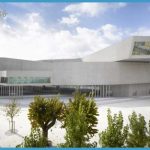
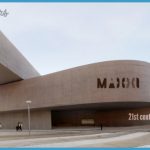
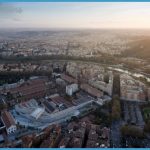
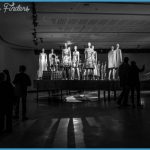

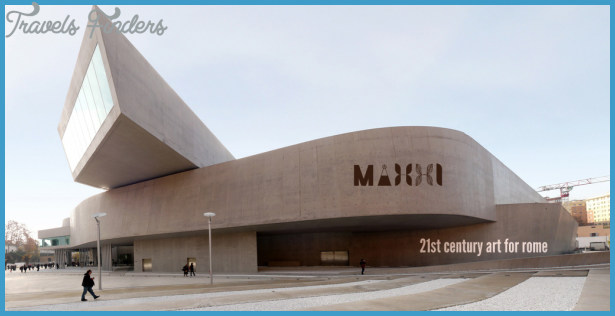
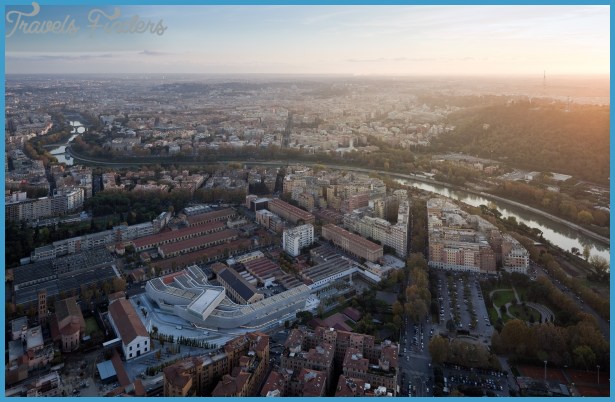
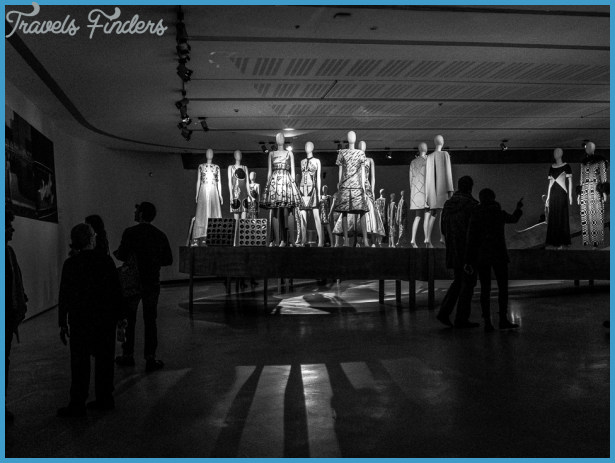





This whole article is copied from the DK book, Great Buildings.